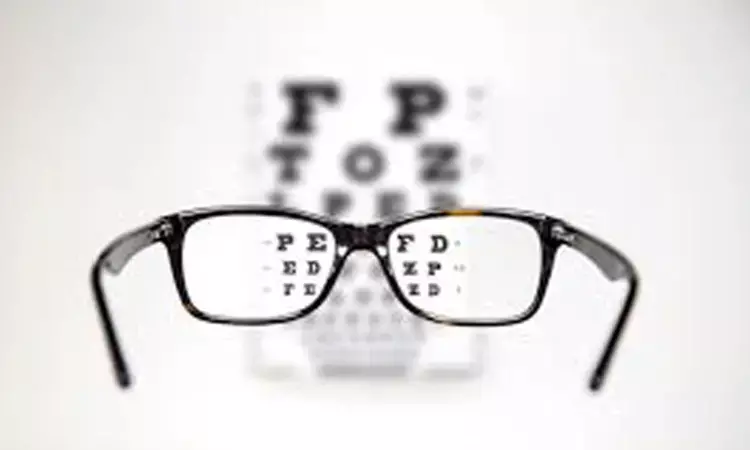- Home
- Medical news & Guidelines
- Anesthesiology
- Cardiology and CTVS
- Critical Care
- Dentistry
- Dermatology
- Diabetes and Endocrinology
- ENT
- Gastroenterology
- Medicine
- Nephrology
- Neurology
- Obstretics-Gynaecology
- Oncology
- Ophthalmology
- Orthopaedics
- Pediatrics-Neonatology
- Psychiatry
- Pulmonology
- Radiology
- Surgery
- Urology
- Laboratory Medicine
- Diet
- Nursing
- Paramedical
- Physiotherapy
- Health news
- Fact Check
- Bone Health Fact Check
- Brain Health Fact Check
- Cancer Related Fact Check
- Child Care Fact Check
- Dental and oral health fact check
- Diabetes and metabolic health fact check
- Diet and Nutrition Fact Check
- Eye and ENT Care Fact Check
- Fitness fact check
- Gut health fact check
- Heart health fact check
- Kidney health fact check
- Medical education fact check
- Men's health fact check
- Respiratory fact check
- Skin and hair care fact check
- Vaccine and Immunization fact check
- Women's health fact check
- AYUSH
- State News
- Andaman and Nicobar Islands
- Andhra Pradesh
- Arunachal Pradesh
- Assam
- Bihar
- Chandigarh
- Chattisgarh
- Dadra and Nagar Haveli
- Daman and Diu
- Delhi
- Goa
- Gujarat
- Haryana
- Himachal Pradesh
- Jammu & Kashmir
- Jharkhand
- Karnataka
- Kerala
- Ladakh
- Lakshadweep
- Madhya Pradesh
- Maharashtra
- Manipur
- Meghalaya
- Mizoram
- Nagaland
- Odisha
- Puducherry
- Punjab
- Rajasthan
- Sikkim
- Tamil Nadu
- Telangana
- Tripura
- Uttar Pradesh
- Uttrakhand
- West Bengal
- Medical Education
- Industry
High myopia major risk factor for glaucoma development at 10 years, study reveals

China: People with high myopia are at a major risk for developing open-angle glaucoma (OAG) with a 7.3 times increased risk as compared to those with emmetropic eyes, reveals a recent study with 10-year follow-up. Additionally, intraocular pressure (IOP), higher age, vertical cup/disc ratio (VCDR), and thinner central corneal thickness (CCT) were related to increased incidence of OAG.
"The findings may be of critical to clinical protocols and screening strategies," Ya Xing Wang, Beijing Tongren Hospital, Beijing, China, and colleagues wrote in their study published in the British Journal of Ophthalmology.
Glaucoma is one of the leading causes of irreversible vision impairment and blindness worldwide. While may studies have investigated glaucoma prevalence in various world regions and countries, only few of them addressed the incidence of glaucoma and its risk factors. Considering this, the researchers team from China conducted a longitudinal observational population-based study with an objective to assess the 10-year incidence of open-angle glaucoma (OAG) and its associations in an adult Chinese population.
The study included 4439 participants aged 40+ years participating in the Beijing Eye Study in 2001, out of which 2695 individuals (60.7%) were re-examined in 2011, while 397 participants had died (8.5%).
Key findings of the study include:
- Incident OAG was found in 75 participants among 2494 individuals free of glaucoma at baseline.
- The 10-year OAG incidence (mean: 3.0%) increased from 1.8% in individuals aged 40–49 years, to 5.9% in participants aged 70+ years.
- OAG incidence was highest in the high myopia group (13.3%±6.3%, OR: 7.3), followed by the moderately myopic group (8.1%±4.3%, OR: 4.2) and the low myopic group (6.2%±2.8%, OR: 3.2), as compared with the emmetropic/hyperopic group (2.1%±0.8%).
- In multivariable analysis, higher OAG incidence was associated with older age (OR: 1.06), longer axial length (OR: 1.72), higher intraocular pressure (IOP) in 2001 (OR: 1.18), higher vertical cup/disc ratio (VCDR) (OR: 60.8) and thinner central corneal thickness (CCT) (OR: 0.98).
"In a 10-year follow-up, we found myopia to be major risk factor for OAG development; the other factors being longer axial length at baseline, higher IOP, older age, thinner CCT and higher VCDR at baseline," the authors concluded.
Reference:
Wang YX, Yang H, Wei CC, et alHigh myopia as risk factor for the 10-year incidence of open-angle glaucoma in the Beijing Eye StudyBritish Journal of Ophthalmology Published Online First: 22 February 2022. doi: 10.1136/bjophthalmol-2021-320644
Dr Kamal Kant Kohli-MBBS, DTCD- a chest specialist with more than 30 years of practice and a flair for writing clinical articles, Dr Kamal Kant Kohli joined Medical Dialogues as a Chief Editor of Medical News. Besides writing articles, as an editor, he proofreads and verifies all the medical content published on Medical Dialogues including those coming from journals, studies,medical conferences,guidelines etc. Email: drkohli@medicaldialogues.in. Contact no. 011-43720751


